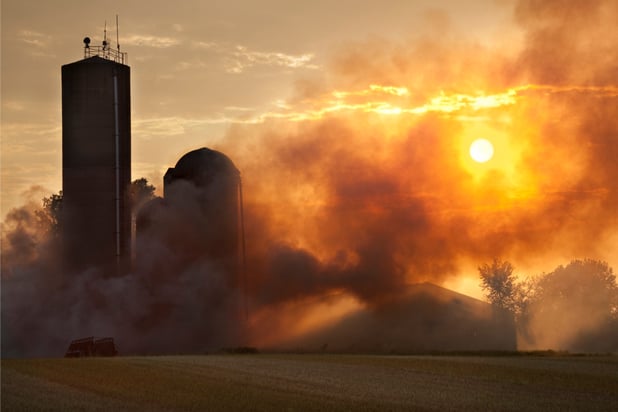

The regulatory environment around PFAS “forever chemicals” is constantly changing. In August, the US Environmental Protection Agency (EPA) proposed to designate two of the most widely used per- and polyfluoroalkyl substances (PFAS) as hazardous substances under the Comprehensive Environmental Response, Compensation, and Liability Act (CERCLA), also known as “Superfund”.
Following the Biden-Harris Administration’s commitment to tackle environmental injustice and improve public health, the proposal applies to perfluorooctanoic acid (PFOA) and perfluorooctanesulfonic acid (PFOS), including their salts and structural isomers, and is based on significant evidence that PFOA and PFOS may present a substantial danger to human health or welfare or the environment.
With or without federal PFAS regulation, the litigation landscape around PFAS is heating up, according to Alex Roje, partner in Lathrop GPM’s Insurance Recovery practice, with plaintiffs alleging all kinds of bodily injury and property damage from exposure to the “forever chemicals”.
Major manufacturers and sellers of products containing PFAS – such as 3M Company and E.I. DuPont de Nemours, Inc. – have already been the subject of state-driven litigation and class action lawsuits, and they have both paid out hundreds of millions of dollars, with future pay-outs likely.
“But what about those companies that don’t manufacture the actual product, or the chemical, but they use it? That’s the next level of PFAS risk,” said Roje. “PFAS goes into all kinds of products, from the waxy paper that wraps around sandwiches or hamburgers, to carpets, upholstery, cleaning products, cookware – there are all kinds of applications for it.
“So, if we want to understand PFAS risk, where do we look? The science is telling us, at least right now, that PFAS is really a drinking water issue. While PFAS can enter your body through inhalation or through the skin, the risk that seems to be most substantially correlated to disease is through ingestion.”
The problem with PFAS is the chemicals can’t naturally break down, so they accumulate in water, on soil, and in blood. Studies have shown that high levels of PFAS can lead to increased risk of cancer, changes in liver enzymes, and decreased vaccine response, among other health effects.
“PFAS-contaminated water might also be used for agriculture, including raising animals for consumption,” said Roje. “If there’s PFAS in water that is used to irrigate fields and crops, and animals are then drinking that water or eating that grass, when we later ingest the meat from those animals, we can become contaminated.
“There’s an immediate PFAS litigation risk in the agribusiness industry […] and I’m not sure it’s necessarily on their radar yet. They’re not necessarily concerned with it being a hazardous substance, because they’re saying: ‘We’re not using it, so why should we care?’ But the reality is that PFAS is getting into the environment, and it’s finding its way through the food chain. Because it’s so persistent, I expect PFAS is going to be a major risk factor for agribusinesses going forward.”
As the litigation landscape around PFAS has evolved, Roje has seen more and more “creative arguments” from the plaintiffs’ bar around the science relating to the exposures.
In March 2022, fast-food giant McDonald’s was named in a class action lawsuit for allegedly failing to disclose to its customers that some of its grease-resistant packaging, including for its popular Big Mac burger, contain PFAS. McDonald’s moved to get the class action tossed, arguing that the PFAS it uses are in fact safe and approved by the US Food and Drug Administration.
“While the connection between PFAS in that food packaging and human disease or bodily injury is more attenuated, I do think we’re going to start seeing more of those claims,” Roje told Insurance Business. “I think the next wave of litigation is really going to be among those businesses that use products that have PFAS in them.”
It is important for companies to evaluate whether they have any insurance coverage to address potential PFAS claims. Current commercial general liability (CGL) insurance policies do not provide coverage for PFAS claims because of pollution or PFAS-specific exclusions. Instead, businesses should assess their historic CGL policies - meaning those issued before the broad form pollution exclusion was introduced in the mid-1980s – to see if they have coverage.
“Those policies can go back 50 years or more, and if they were in place during a period of time when PFAS was allegedly contaminating the water and food supply, coverage might potentially be available,” Roje explained. “If a company knows it could face PFAS-related liability, it should start looking for its historic policies now, before a claim occurs. Businesses really need to get a handle on those old policies.
“There is also pollution liability insurance that businesses can purchase as a standalone coverage. Really, those are the two ways that you’ll be able to get coverage for any kind of litigation involving PFAS. It’s either a current policy that’s specifically for pollution liability, or it’s a historic [CGL] policy, before 1985, that covers the businesses generally for bodily injury and property damage.”
